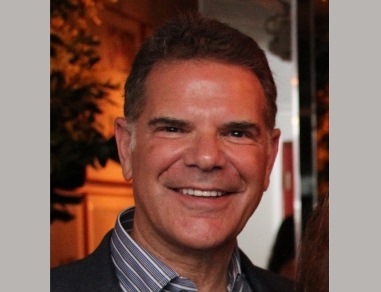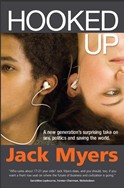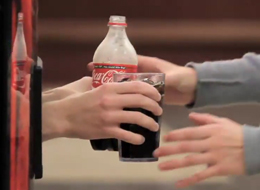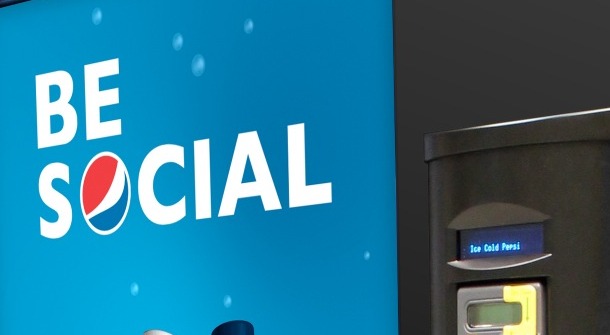How Coke and Pepsi are Defining the Future of Marketing

The following is excerpted from Jack Myers new best-selling book Hooked Up: A New Generation's Surprising Take on Sex, Politics and Saving the World. The book focuses on "Internet Pioneers" – also called the Hooked Up Generation -- born 1991-1995. They are the first generation of college students to grow up with the Internet and the first to cross the chasm from the pre to the post-Internet Age. The following is excerpted from Chapter 23: Marketing and Internet Pioneers. For more information visit www.hookedupgen.com and visit www.amazon.com for more excerpts and the full table of contents
generation of college students to grow up with the Internet and the first to cross the chasm from the pre to the post-Internet Age. The following is excerpted from Chapter 23: Marketing and Internet Pioneers. For more information visit www.hookedupgen.com and visit www.amazon.com for more excerpts and the full table of contents
Case Study: Coke vs. Pepsi
The longest war ever waged hasn't been fought on battlefields. Rather, it's been conducted between Coca Cola and Pepsi, two iconic brands with a similar anchor product; cola, the beverage that has defined America since the beginning of the 20th century. Established respectively in 1886 and 1903, Coke and Pepsi have historically competed for consumers and shelf space. Today, they have almost equal shares of the beverage market.
In the first half of 2011, Coca Cola garnered 35 percent of beverage consumers, a slightly larger share than Pepsi's 32.9 percent. This was largely the result of aggressive marketing campaigns, many of them aimed at young consumers who have yet to establish brand loyalty. These consumers include the 21.2 million 18 to 22 years olds who are the "Hooked Up" Generation and the 15 million college students who have especially high demand for the high-energy caffeine beverages that are the forte of both Coca Cola and Pepsi.
The idea that Pepsi and Coke are brands with different appeal has roots in the Pepsi Generation, a themed advertising campaign that began in 1963. Rather than claiming that Pepsi was just as good as Coke, the campaign set out to convince consumers that Pepsi drinkers were different — and more forward-thinking — than the older, more traditional folks who bought Coke. For a long time, the image of Pepsi drinkers being younger at heart prevailed in the media, from the revitalization of the "Pepsi Generation" campaign in the 1980s, to the commercials starring Michael Jackson and Madonna in the 1990s. In the mid-2000s, Britney Spears resuscitated the phrase "For Those Who Think Young" in her retro commercials for Pepsi.
Both Coca Cola and Pepsi have significantly altered their marketing strategies to target young consumers, focusing on creating inexpensive content to be disseminated via social media rather than on traditional advertising campaigns. In many ways, these campaigns provide marketing lessons for the future — successful tactics that will be copied and unsuccessful strategies that marketers will avoid. Coca Cola's digital strategies for college students aim toward a global market while remaining locally relevant. Pepsi's campaigns have shifted heavily toward celebrity endorsements and music campaigns. In the last four years, Coke has amassed nearly three times as many media mentions as Pepsi.
Coke's success in the digital realm is due in large part to "The Happiness Machine," a viral video initiative. Coca Cola representatives travel to college campuses around the world and install Coke vending machines that are far more than beverage dispensers. Rather than ejecting the expected — a single Coke bottle — these machines dispense multiple sodas, pizzas, and in some cases, 20-foot subs. (Hidden compartments are custom-built into the machine.)
Recipients react with shock and amazement, giggling and calling out to friends as hands appear in the slot, bearing unlikely (and magical) gifts. A hidden camera records their reactions which are then used in creating videos. The first video, (recorded at St. John's University, New York City) was released on YouTube on January 1, 2010. It went wildly viral, getting over 700 thousand hits in the next five days. Within a week, it had one million views, taking it to the top of the viral video chart. Several more videos have been distributed and their success has contributed to the corporation's ability to cut back on marketing expenditures by almost $45 million.
then used in creating videos. The first video, (recorded at St. John's University, New York City) was released on YouTube on January 1, 2010. It went wildly viral, getting over 700 thousand hits in the next five days. Within a week, it had one million views, taking it to the top of the viral video chart. Several more videos have been distributed and their success has contributed to the corporation's ability to cut back on marketing expenditures by almost $45 million.
The success of Coca Cola's "Happiness" campaign among Internet Pioneers lies in the simplicity of its core concept. Rather than being about consumerism, the videos are simple, feel-good productions that echo Coke's traditionally wholesome, Norman-Rockwell-esque ads of jolly Santas, nuclear families, polar bears and dew-faced youths. They associate the brand not with fame or unobtainable goals, but rather with an emotion that anyone — despite his or her religious affiliation, language capabilities, ethnicity, or belief system — can relate to on a visceral level.
"What Coke really gave away was a sense of happiness that created an emotional connection with the brand," explained Paul Iannacchino, the creative director of Definition 6, the agency that conceived of the "Happiness Machine" campaign. "Students involved in this video were caught up in their everyday lives, and this little moment touched them. We used free stuff to surprise people, but what we gave away was happiness and a smile. The key is engagement, whether you were there or just watching; free stuff was just the catalyst."
Coke also engages in more traditional forms of marketing to Internet Pioneers, signaling the importance of the generation to the brand, including Coca Cola Music, which promotes emergingartists by recording them singing Coke's advertising jingle, "Can You Feel It." In 2010, the brand launched Expedition 206, a program that sponsored three 20-something adventurers' travels around the world, reporting on Coke and its effect on people in 206 countries. The company also resorts to less tasteful forms of sponsorship, which include the "Coca Cola Beach," a party spot for Spring Break on South Padre Island in Texas. Free trips to the event are given away through a college campus "Text-To-Win" campaign, which offers other prizes such as gift cards from Target and Visa.
Pepsi and Social Responsibility
While Coke has actively targeted college students, Pepsi has staged campaigns that target a socially engaged audience in general. These campaigns included "Pepsi Refresh", the company's main marketing initiative introduced in 2010. The campaign invites people to submit ideas that they think will change the world. These include fundraising campaigns to buy uniforms for Special Olympics contenders and raising money to purchase books for local libraries, to name just two. An Internet audience then votes on which idea they like best. Whoever wins the vote gets funding from Pepsi to bring their ideas to life. When Pepsi went digital, they shifted their focus to being a socially responsible brand. Then, backpedaling, they aggressively veered back toward being a lifestyle brand by focusing on music. Pepsi's campaigns include "Pepsi Pulse", a real-time visualization of social media conversations going on about Pepsi initiatives; "Pepsi X-Factor", a sponsorship website in collaboration with X-Factor, Simon Cowell's popular Fox program that competes with the Coke-sponsored American Idol; and "Pepsi SoundOff ", a program that aims to create a virtual community based on social standing. Together, these disparate campaigns form a message that is difficult to discern.
for Special Olympics contenders and raising money to purchase books for local libraries, to name just two. An Internet audience then votes on which idea they like best. Whoever wins the vote gets funding from Pepsi to bring their ideas to life. When Pepsi went digital, they shifted their focus to being a socially responsible brand. Then, backpedaling, they aggressively veered back toward being a lifestyle brand by focusing on music. Pepsi's campaigns include "Pepsi Pulse", a real-time visualization of social media conversations going on about Pepsi initiatives; "Pepsi X-Factor", a sponsorship website in collaboration with X-Factor, Simon Cowell's popular Fox program that competes with the Coke-sponsored American Idol; and "Pepsi SoundOff ", a program that aims to create a virtual community based on social standing. Together, these disparate campaigns form a message that is difficult to discern.
In 2011, the marketing team "made a conscious decision to go aggressively back into music," says Frank Cooper, chief global consumer engagement officer at PepsiCo Beverages. "We have a rightful place in music."
Internet Pioneers live in a digital world where they are constantly inundated with lifestyle marketing guised as creative content. Being introduced to more of the same from a brand like Pepsi makes the brand's marketing efforts less memorable and engaging. Both brands share well-established scholarship programs that award millions of dollars every year to worthy candidates. The Coca Cola Scholars Foundation, which gives annually to 1,400 college students, also has a Coca Cola Community College Academic Team, signaling their commitment to enable students of different backgrounds to succeed in the post-college world. Pepsi partners with institutions such as UNC, City College of New York, and Penn State to offer $10,000 scholarships to deserving students.
What is rare for Internet Pioneers and Internet Natives is having an experience that evokes innocent, unadulterated emotions, the best of which is happiness. With its "Happiness Machine," Coke manages to harness joy in their advertisements, while at the same time speaking intimately with a very diverse audience. The brand's focus on core values, along with Pepsi's inability to stay on course with a coherent brand identity, gives Coke the upper hand in the campus cola war. The lessons offer guidance for all marketers seeking to communicate with Internet Pioneers today and into the future, arguing for more emotionally based campaigns and fewer traditional lifestyle marketing programs.
lessons offer guidance for all marketers seeking to communicate with Internet Pioneers today and into the future, arguing for more emotionally based campaigns and fewer traditional lifestyle marketing programs.
Read more about the Hooked Up Generation atwww.hookedupgenand buy the book atwww.amazon.com


